By Karl Ludvigsen
This article was originally published in three parts at a length of 4,500 words in 2009. Links to the original articles are posted at the end of this article.
Louis Chevrolet, Louis Wagner and Walt Hansgen are among the best-known racing drivers the world has seen. What do they have in common with Don Parkinson, Pietro Bordino and Paul Richards? Just this: all of them were race winners in America driving Fiat-or Fiat-based racing cars. For over a century Americans and racing Fiats have been linked together in the world of auto competition.
It was inevitable that Americans, with their love of competition, and Fiat, builder of sporting cars, would get together. For its part, Fiat had been proving from the beginning of its life as an auto maker that its cars were built to be raced. Only a year after Fiat was founded in 1899, two young Fiat shop workers, Vincenzo Lancia and Felice Nazzaro, brought the Turin firm a one-two finish at Padua. Two years later, Lancia’s Fiat beat Mercedes to win the Susa-Moncenisio hillclimb. In September of 1905, Alexandre Cagno’s 100 hp 16 liter Corsa Fiat climbed Mt. Ventoux in record time. Nazzaro drove the Fiat F2 to capture the Targa Florio, the French Grand Prix and Germany’s Kaiserpreis, all in 1907.
Thus it was scarcely surprising that auto racers in America were quick to board the Fiat bandwagon.
1904-1916
Fiat cars had been racing in the States since 1904 when Paul Sartori recorded a lap at the astonishing speed of 105 mph at New York’s Empire State track. Sartori and William Wallace also entered the first Vanderbilt Cup race in 1904, but without success.
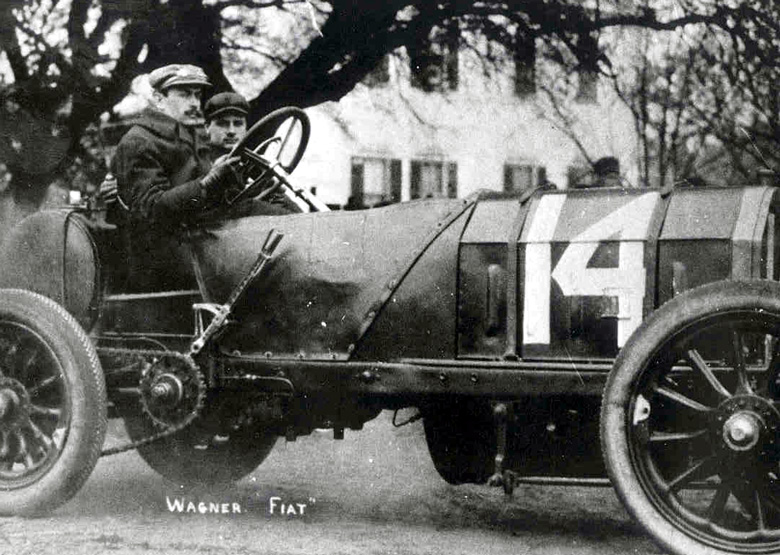
Wagner behind the wheel of the 1908 SB4, the 12 liter Fiat which won at the Targa Florio and the first American Grand Prize at Savannah.
In the second Vanderbilt Cup challenge, in 1905, Fiats put forth a stronger effort. Three 16.3-liter Fiats were entered for Nazzaro, for Louis Chevrolet and for Lancia. Sartori and Emanuel Cedrino drove 10,600 cc machines. After seven laps, Lancia was 21 minutes ahead of the second-place Panhard. Lancia had led from the start. With less than 65 miles to go, Lancia’s Fiat collided with Walter Christie’s car. Lancia lost 47 minutes in the pits while Christie was forced to retire. Hemery’s Darracq overtook Heath’s Panhard to win as a furious Lancia finished fourth.
The year 1905 also saw Swiss-born Louis Chevrolet, the eldest of the three Chevrolet brothers, score a victory for Fiat. In May Louis opened the new dirt track at Morris Park in the Bronx by winning the one-mile time trials and the three-mile “Free-For-All.” Then in 1906, Vincenzo Lancia returned to the Vanderbilt Cup wars and brought his Fiat home in second place.
Gentlemanly Ralph DePalma, who according to many experts was the best of all American race drivers, joined the Fiat factory team that captured the 1908 American Grand Prize. Run over a palm-lined 25-mile course on the outskirts of Savannah, this first of all U.S. Grands Prix was captured by Louis Wagner, whose Fiat averaged over 65 mph for 403 miles. Felice Nazzaro placed third and Ralph de Palma, who led the early laps, was ninth.
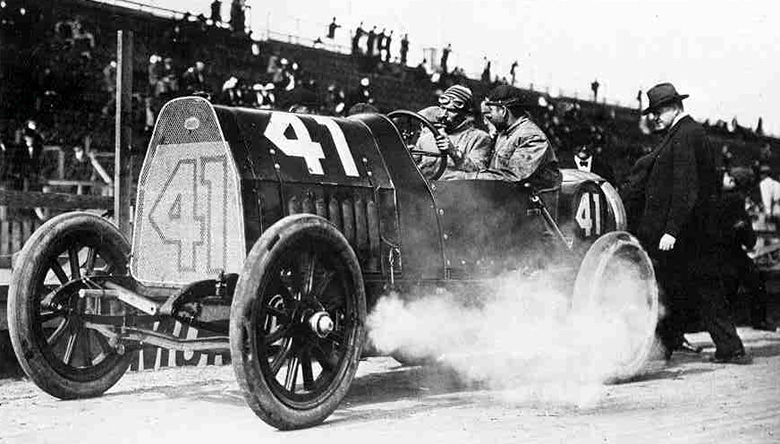
Louis Wagner with the Fiat at the Savannah races in 1911. Almost as tall as an average man, the huge Fiats won two of the three American Grand Prize events at Savannah.
The Saga of David Bruce-Brown
David Bruce-Brown, an 18-year-old prep-school lad whose mother was listed in New York’s social register, came on the scene in time for the American Grand Prize races. Driving Fiats for most of his brief but meteoric career, Bruce-Brown broke Willie Vanderbilt’s mile record at Daytona Beach in 1908.
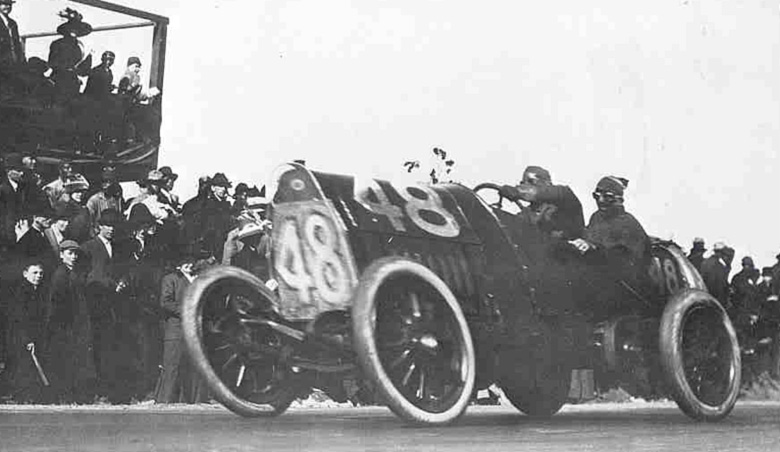
David Bruce-Brown in the winning S.74 Fiat at Savannah on a cold November 30, 1911. The S.74 was a 14.137 liter four cylinder which produced about 190hp at only 1600 rpm. Photo from “The Great Savannah Races.”
In 1909, he beat DePalma for the Dewar Trophy. Bruce-Brown won the 1910 American G.P. for Benz but returned to Fiat in 1911 to earn third place in the inaugural Indianapolis 500, where the Fiats of Eddie Hearne and Caleb Bragg finished 21st and 37th. The 1911 American Grand Prize, where his type S74 Fiat averaged 74.4 mph for 412 miles to finish two minutes in front of Hearne’s Benz, was still another victory for David Bruce-Brown. The Fiats of Bragg and Wagner placed fourth and ninth.
Joining Ralph DePalma and Louis Wagner at Dieppe for the 1912 running of the French Grand Prix, the young New Yorker made his European debut by taking an early lead and setting the fastest lap. Fiat S74s were running 1-2 after four laps around the 48-mile circuit. The end of the first day’s racing saw Bruce-Brown 1st, Wagner 3rd and DePalma 8th.
The second day of racing at Dieppe saw David Bruce-Brown disqualified. Unwittingly, he had taken on fuel after stopping to repair a broken gas line. DePalma suffered a similar fate and retired. Bruce-Brown, however, pushed on to finish an unofficial third with team-mate Wagner’s Fiat coming in second to George Boillot’s Peugeot.
David Bruce-Brown was never to see Europe again. A tire burst while he was practicing for the 1912 American G.P. now held at Milwaukee, and his car overturned. Both the driver and riding mechanic suffered fatal injuries.
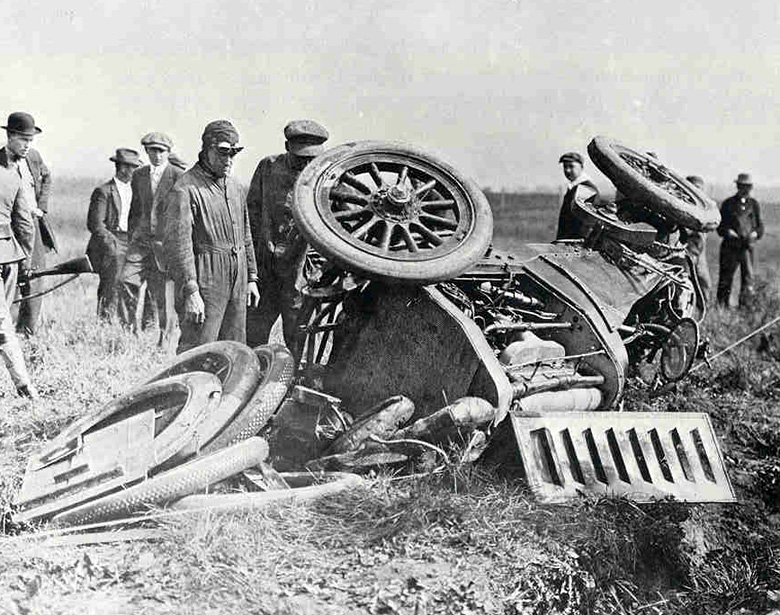
Bruce-Brown’s mother came to Savannah to urge him to quit racing, but as his racing successes continued, she became very excited about the sport. The danger caught up with young David at Milwaukee in July of 1912. The big red Fiat that killed him was the same car that gave him his 1911 victory at Savannah. Photo from “The Great Savannah Races.”
Fiat, Barney Oldfield and Ralph DePalma
Following three years in Savannah the fourth Grand Prize was staged in Milwaukee on October 5, 1912. Fiat S.61s were in the hands of two outstanding American professionals – Barney Oldfield, a superb showman as well as a great driver, and Terrible Teddy Tetzlaff, who usually broke or won. A third S.61 was driven by a wealthy sportsman, Caleb Bragg, a Fiat regular.
Although Bragg won, the show belonged to Tetzlaff. He led almost every lap and, before breaking down well past the halfway mark, set the 77.3 mph fastest lap. Oldfield finished a solid 4th.
Seven American Grand Prize events were held between 1908 and 1916. Crossing the nation from Savannah to Santa Monica, they were fiercely contested by the best of European and American cars and drivers. Only one make, Fiat, won three of them.
September 1907 saw Fiat drivers Ed Parker and Emanuele Cedrino win one of the toughest: 24 hours on the dirt at the 1.39- mile Morris Park track in the Bronx. American professionals were turning to Fiat in ever-increasing numbers.
In 1909 Lewis Strang turned a 95 mph lap for a Fiat win at the Atlanta motordrome. Eddie Hearne then copped the Cincinnati 200-mile road race for Fiat with a 58 mph average.
Racing was moving westward: Frank Verbeck and Vic Hirsh covered 1491 miles in their Fiat to win the Playa del Rey 24 hours. At Santa Monica, Teddy Tetzlaff piloted his S.61 Fiat to victory in the 303-mile “Unlimited” road race with a 78.72 mph average. Two months later he opened Washington’s new 3.5-mile Montamara road course by winning the 200-mile “Heavy Car Race,” and he then beat two of the day’s best, Ed Pullen’s Mercer and Earl Cooper’s Stutz, to win a 250-mile “Free-For-All.” Some driver—some car!
1920-1940
By 1914 the First World War began and a great era of racing came to a close. Almost ten years were to pass before Pietro Bordino, an accomplished Fiat works driver brought a new 3-liter type 801-402 to America. January of 1922 saw Bordino’s 115.9 mph take fastest-lap honors on the boards at Beverly Hills, and that June he won a 50-mile race at the 14-mile Northway bowl in Santa Rosa.
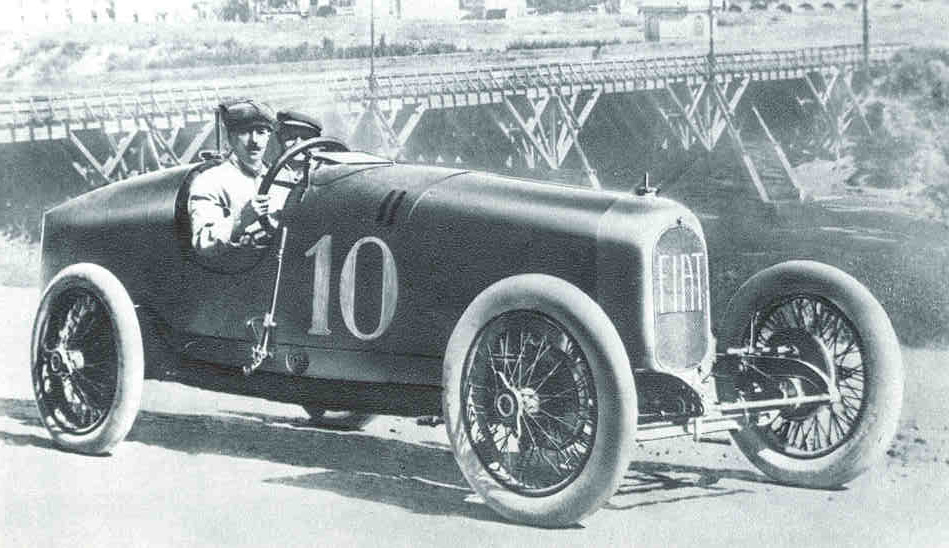
The 801/402 was a straight-eight three-liter with DOHCs. Pietro Bordino won at Santa Rosa in 1922 in a car similar to this. Photo Fiat.
Three years later Bordino returned to America with an 8-cylinder 1.5-liter supercharged Fiat Grand Prix car. He finished sixth in it at Culver City in March, 1925, and was back in April to win a 25-mile sprint with a 133 mph race average. Bordino then entered the car in the 1925 Indianapolis 500, qualifying at 107.661 mph, which earned him eighth place on the grid and eventually placed 10th.
Another World War would intervene, but despite heavy damage, the death of the founder and total defeat, Fiat would quickly regain its place–and then some–in America.
1945-1980
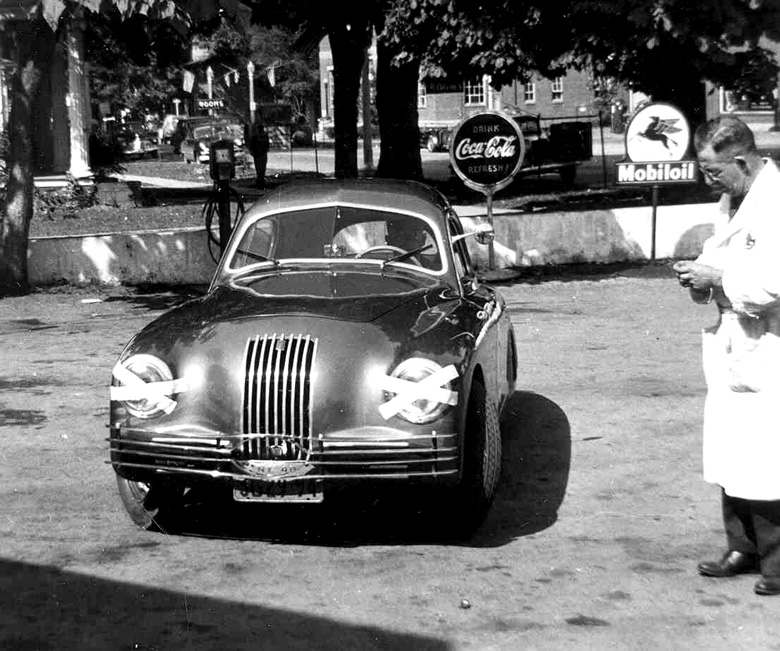
In 1949, Frank Shaffer snapped Tony Pompeo in his new Fiat 1100 Mille Miglia coupe. He won his class in the Seneca Cup. Fiats and ‘Etceterinis’ were imported by independents like Pompeo before regular dealerships were established in the U.S.
Though the little Fiat 1100cc Mille Miglia coupe was extremely successful in post war racing, it was overshadowed by cars like the Fiat-based Cisitalias that made their racing debut in September of 1946 and hit the post-war motoring world like an earthquake.
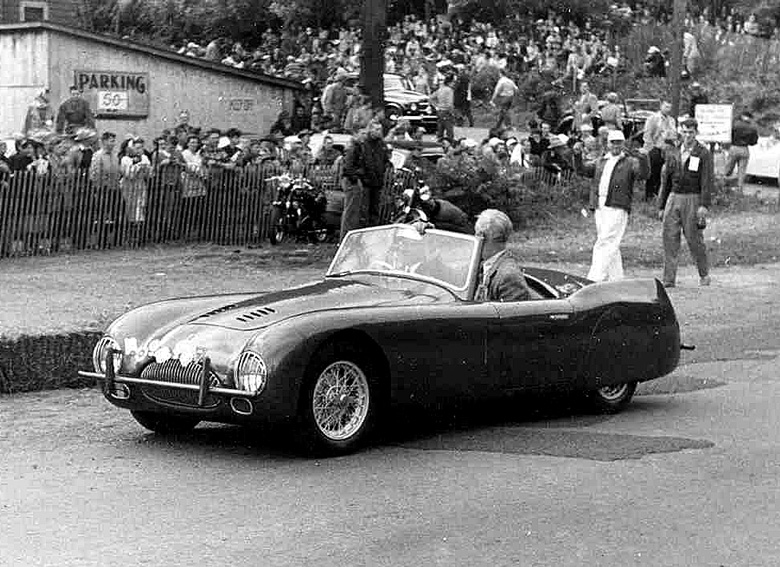
“This is Cisitalia chassis 011SMM owned by Dr. Samuel Scher, noted NY plastic surgeon and collector. Tony Pompeo had it tarted up with bumpers, over-riders, full windshield and top. He never had it raced and sold it to Paul Ceresole, pioneer Boston SCCA racer who ran it at the first Sebring 12 hrs. I bought it around 1970. It was in rough shape and had a Simca engine. I subsequently got a genuine Cissy motor from Jim McGee, the crew chief for the Team Roosevelt Abarth operation,” wrote Gary Ford about this photo by Frank Shaffer.
Two 1100 cc Fiat sedans and two 1100 cc Cisitalias entered the 1949 races at Watkins Glen. Tony Pompeo’s sedan won class A in the Seneca Cup race while Logan Hill’s Cisitalia captured class honors in the Grand Prix with Joe Ferguson’s Cisitalia 2nd and Pompeo 3rd in class. Russ Boss, Jim Pauley and Tony Pompeo drove Cisitalias at Watkins Glen in 1950. In 1951 a Bandini-Fiat, two Tony Pompeo Siatas, Logan Hill’s Simca and Freddy Proctor’s Siata joined the Fiat brigade. The following October saw more than a dozen Fiat-engined race cars at Watkins Glen when Roger Barlow’s Simca finished 3rd to the Oscas of Big Bill Spear and Gentleman Jim Kimberly in the 1952 running of the Queen Catherine Cup.
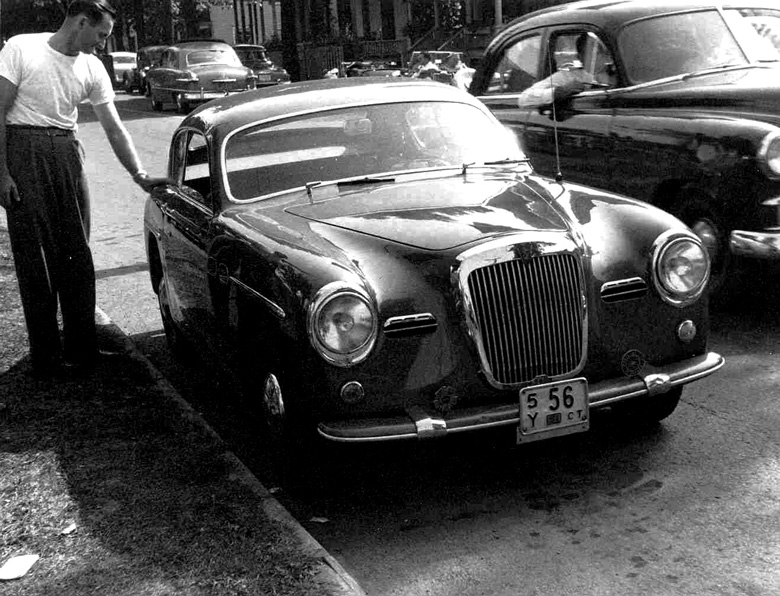
Fred Proctor’s Siata Daina, which placed 12th in the Queen’s Catherine Cup at Watkins Glen in 1951. Hector Scheffer in another Fiat powered Siata placed 3rd. Photo by Frank Shaffer.
Highly successful sports cars and single-seaters were constructed around Fiat components by engineer Carlo Abarth and by Vittorio Stanguellini, a Fiat dealer in Modena. Abarth, who worked with Dusio on the aborted Porsche-Cisitalia Formula 1 program, started in business by making exhaust systems. By using Fiat engines and Zagato coachwork, Abarth built some of the fastest small cars of the 1960’s.
Best known as the first major builder of Formula Juniors, Stanguellini produced a large number of beautifully-made single-seaters powered by 1100 cc Fiat engines driven through Fiat gearboxes. International Formula Junior honors were taken by Michael May’s Stanguellini in 1959 while Colin Davis won the 1960 Championship driving a Fiat-engined Osca and Taraschi-Fiat.
In December, 1959, Alec Ulmann brought modern Grand Prix racing to the United States. As Count Lurani, a close friend of the Sebring promoter, was Formula Junior’s patron saint, the Juniors had their own race. Briggs Cunningham entered three Alfred Momo-prepared Fiat-powered Stanguellini. Predictably, they finished 1-2-3 with Walt Hansgen taking the checker.
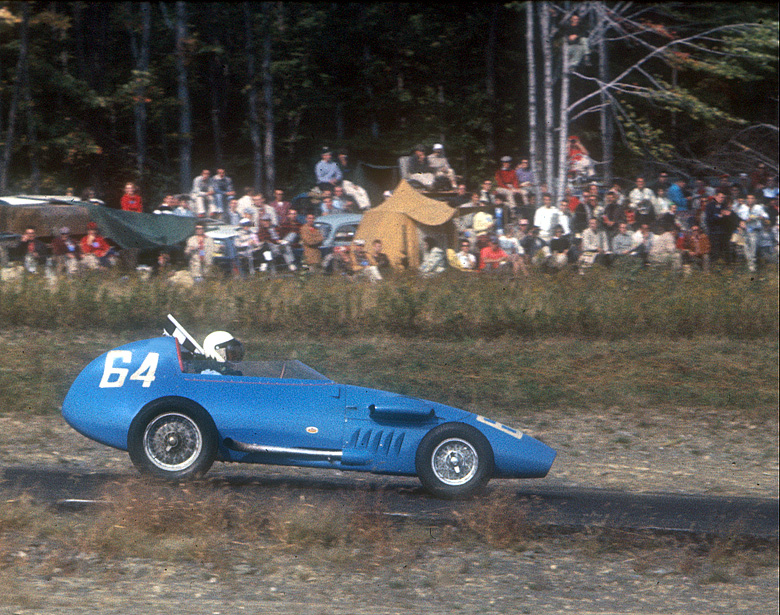
Walt Hansgen tours Watkins Glen in 1959 with the checkered flag after posting the first win by a Formula Junior car in America. In December, Hansgen would again win with the Stanguellini at Sebring. Photo by Ade Ketchum, courtesy Argetsinger family collection.
For Alfred Momo, Cunningham’s revered chef d’equipe, it was a poignant weekend. An apprentice machinist for Fiat in Turin in 1912, Alfred Momo was turned toward the new world by Fiat when, in 1920, they sent him to work as a field representative for Joseph’s, their New York agent.
Fiat and the SCCA
The Sports Car Club of America’s National Championships came on the scene about this time. Although the SCCA program wasn’t truly national—there were great gaps in its geography—for the aspiring road racer it was the best game in town. What follows is a nostalgic look at some of the SCCA stalwarts who depended on Fiat cars and Fiat-based engines in winning National Championships:
Paul Richards – Fiat-Abarth, 1959 I Production
Chandler Lawrence – Fiat-Abarth, 1960 H Production
Doug Diffenderfer – Siata, 1960 F Production
Ed Astri – Fiat-Abarth, 1962 H Production
Chuck Hamilton – Stanguellini, 1965 Formula C (SE)
Peter Feistman – Fiat-Abarth, 1965 H Production (SE)
Dan Parkinson – Dolphin Abarth, 1965 & 1966 H Sports Racing
Dan Parkinson – Abarth 1000, 1966 & 1967 D Sedan
Fred Plotkin – Abarth Special, 1968 D Sports Racing
Ed Dempsey – Fiat-Abarth, 1968 D Sedan
Other Fiat racers starred on the national scene without having the consistent record that’s needed to put together a Championship. Among these was one of America’s leading Fiat and Abarth enthusiasts, Al Consentino. On eight separate occasions Al qualified for the big end-of-season SCCA event, the American Road Race of Champions. Another successful Fiat racer was Bob Swenson. His PBS Engineering prepared both sports and racing cars spurred by Fiat power.
The 1979 season brought the best results yet for many Fiat competitors in SCCA races. For the first time the X1/9 came up a winner in SCCA National events. The honor, in G Production class, was shared on the same June day by Richard Davis at Road Atlanta and Kim Baker at Lime Rock. A victory in a Bonus National race, the SCCA’s highest club competition level, went to Californian David Hartsuck at Riverside in his H Production 850 Spider Fiat. Also enjoying success in his 850 Spider was Bill Jucha.
Pininfarina-bodied Fiat Spiders also gained in competitiveness in 1979, recording second-place finishes in SCCA National events in G Production class. Leading exponents of the Spider have been Bill Adrin and Doug Carmean.
The first Fiats that raced in America were close kin to normal production models. So, too, were the Fiats that took to the track 75 years later. As we’ve seen, Fiat has built its full share of special racing cars, many of which have left their tiremarks on American pavement. But it is indicative of the special spirit that is Fiat that so many of the company’s standard models have also been used for competition.
The Complete Three Part Article written by Karl Ludvigsen can be found at these links:
The Fiat Club America is very active…join the fun. Click here to learn more…
About the author: Karl Ludvigsen
In addition to his motor industry activities as an executive (with GM, Fiat and Ford) and head of a consulting company, Karl Ludvigsen has been active for over 50 years as an author and historian. As an author, co-author or editor he has some four dozen books to his credit. Needless to say, they are all about cars and the motor industry, Karl’s life-long passion.
Since 1997 Ludvigsen has been drawing on the photographic resources of the Ludvigsen Library to write and illustrate books on the great racing drivers. His first title in this series was Stirling Moss – Racing with the Maestro. He followed this with Jackie Stewart – Triple-Crowned King of Speed and Juan Manuel Fangio – Motor Racing’s Grand Master. Fourth in this series for Haynes Publishing was Dan Gurney – The Ultimate Racer and fifth was Alberto Ascari – Ferrari’s First Double Champion. Next came Bruce McLaren – Life and Legacy of Excellence and Emerson Fittipaldi – Heart of a Racer.
Also in the field of motor sports Karl Ludvigsen has written about road racing in America, the cars of the Can-Am series, the AAR Eagle racing cars, the GT40 Fords and Prime Movers, the story of Britain’s Ilmor Engineering. His introduction to At Speed, a book of Jesse Alexander’s racing photography, won the Ken W. Purdy Award for Excellence in Automotive Journalism. Other motors-sports titles include Classic Grand Prix Cars, a history of the front-engined G.P. racer, and Classic Racing Engines, Karl’s personal selection of 50 notable power units.
Four of Karl Ludvigsen’s books concern the Chevrolet Corvette, one of them an industry best-seller. He has written three times about Mercedes-Benz, twice about its racing cars. His books on the latter subject have won the Mercedes-Benz Montagu Trophy (twice) and the Nicholas-Joseph Cugnot Award (twice), both recognizing outstanding automotive historical writing. In 2001 he again received the Cugnot award from the Society of Automotive Historians for his book about the early years of the Volkswagen, Battle for the Beetle, a Bentley Publishers publication. In 2002 the Society gave him its highest accolade, Friend of Automotive History.
Karl Ludvigsen is also the author of the definitive histories of Porsche and Opel. His Porsche history, Porsche: Excellence Was Expected, is considered by many to be a model of the researching and writing of the history of an auto company. He has updated it in three volumes for Bentley Publishers for the new Millennium. He is the author of a series of monographs on great Maserati cars.
In 1997 Ludvigsen researched and wrote the catalogue for a special exhibition of Ferrari technological innovations on the occasion of the company’s 50th anniversary and contributed a major section to the company’s official 50-year history. His understanding of the Ferrari world combined with his Library’s holding of the Rodolfo Mailander photo archive to produce Ferrari by Mailander in 2005, a Dalton Watson publication. Its launch was accompanied by major exhibitions in Turin and Pebble Beach of selected photos from the book.
In co-operation with publisher Iconografix, Ludvigsen has established the Ludvigsen Library Series of 128-page books drawing on the holdings of the Ludvigsen Library. The series now numbers 16 titles, including books on Indy racing cars of 1911 to 1939, the 1940s, 1950s, 1960s and 1970s, the Indy Novis, Chevrolet’s Corvair and Corvette, the Mercedes-Benz 300SL of 1952 and 1954-1964, the 300SLR of 1961, Porsche Spyders, the Ferrari factory and American sports-racers: the Cunninghams, Chaparrals and Can-Am racing cars. More titles are in preparation.
The Ludvigsen Library is also active in the provision of photographs and research material for authors, publishers of books and periodicals, and collectors and enthusiasts. It holds extensive original negatives and transparencies from the 1950s forward with special strengths in motor sports, American cars and sports cars. As well it holds original photos and glass negatives from the dawn of the automotive era.
On motor-industry topics Karl Ludvigsen has written books about high-performance engines, the Wankel rotary engine and the histories of American auto makers. His latest book on power units is The V12 Engine, published by Haynes in 2005. He was editor of The Future of the Automobile, the report of the 1981-1984 study of the world auto industry by M.I.T. This was named one of the best business books of the year by Business Week. In 1996 publishers in Britain and the United States launched Karl Ludvigsen’s book on motor industry management, Creating the Customer-Driven Car Company. It draws on his industry experience and in-depth research to advise industry personnel on customer-pleasing best practice.
Since 1989 Karl Ludvigsen has edited and contributed to numerous studies published by Euromotor Reports Limited, a leading researcher of special reports and studies about the European motor industry and market. Resident in England since 1980, Mr Ludvigsen is respected as a close and knowledgeable observer of, and participant in, the world motor industry.
Leading periodicals also publish Karl Ludvigsen’s writings. He is a former technical editor of Sports Cars Illustrated (1956-57), editor of Car and Driver (1960-1962) and east coast editor of Motor Trend (1970s). His articles about cars, companies and motoring personalities are published in America by Road & Track and Automobile Quarterly, among others, while in Europe he writes frequently for The Automobile. He is a columnist for Hemmings Sports & Exotic Cars and Just-Auto.com and a senior writer for Autosport-Atlas.com, a leading motor-racing website.
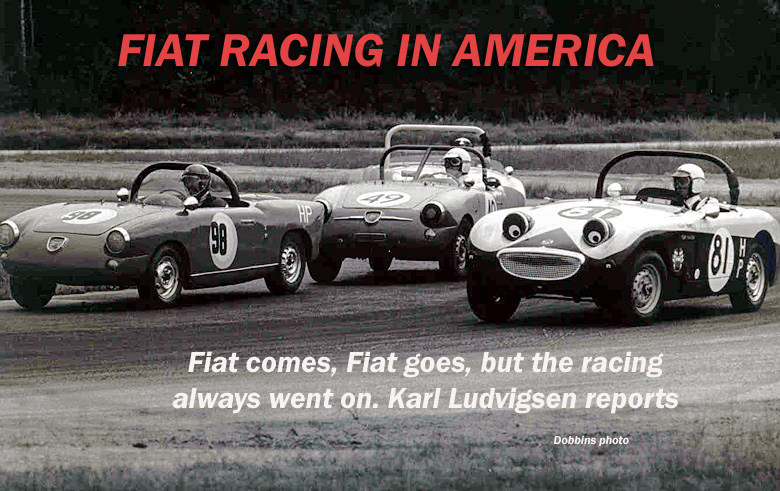
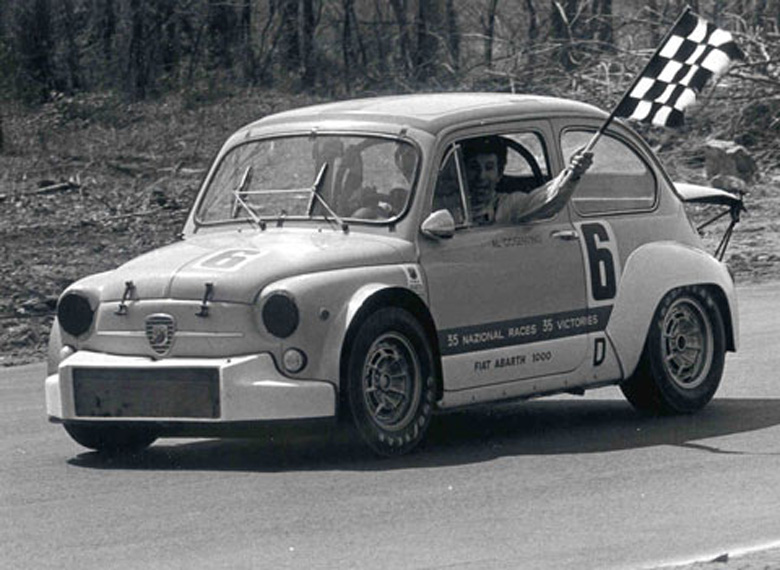
A great article on Fiat racing with a few quibbles as usual; Italy did not suffer defeat in the first world war as it was on the Triple Entente side, fighting mainly the Austrian forces in the mountains.
There was no Mercedes Benz in 1910, the merger between Daimler Motoren Werke and Benz occurring only in 1926.
There is a book on Fiat in Grand Prix racing (mainly for the 1920 to 1930 period)
by Sébastien Faurès Fustel de Coulanges, published by ETAI in France.
This book is right up there with Dees’ Miller Dynasty, Pomeroy’s Grand Prix car, Orsini’s Mille Miglia and Cimarosti’s Carrera Panamericana.The research, the technical analysis and drawings, the text and the pictures are simply first class.Truly one of THE great books on motor racing.
Always delighted to help,
Michel Van Peel
A very good article on Fiat racing history in the U.S. I think there may be some misprints concerning car model identity. I believe the cars referred to as SG1 should be S61. These were 10 liter racers that preceeded the much larger S74. Three of these cars raced at Savannah in 1910. Drivers were Wagner #16, DePalma #19 and Nazzaro #10. The Wagner car was wrecked, Nazzaro broke a drive chain and De Palma was out with a punctured radiator while leading by 2 minutes the 15 liter Benz. The Wagner car is now in the Indy Museum and one of the others is now in a private museum in San Diego. These cars had very long racing historys in the U.S.
Randy Reed
Thank you Randy, and the corrections have been applied.
Pete